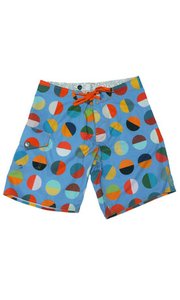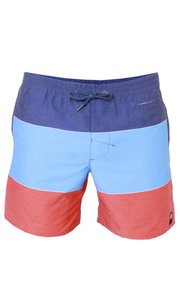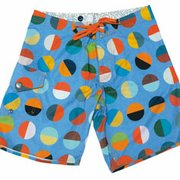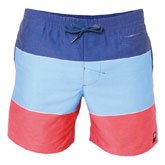Rhythm Plans New Beat for Surf
The marketplace for surf and skate fashion is crowded and dominated by a handful of brands with a loyal following, but Australian-founded brand Rhythm plans to carve a niche in this sometimes insular world with a novel global design network and an Irvine, Calif., office that opened in 2010.
In March, Rhythm debuted its 12,000-square-foot warehouse building. The Irvine office’s staff is composed of seven people who work closely with Rhythm’s other offices in Munich and Australia’s Gold Coast. But they have a lot of leeway to try out their own ideas, said Rhythm’s Chadd Godfrey, who heads up design at the Irvine office. “We have such constant feedback from all offices that it is more like a design collective,” he said.
The small offices are in frequent contact through Skype, and the regional designers meet face-to-face twice a year. But the founding Australian office continues to be the fashion inspiration of the brand. Each office designs specifically for its region because the company sells fashion in places so different from one another.
Rhythm’s Irvine offices are in charge of designing a mash-up of fashion, surf-lifestyle looks and technical fabrics for hip, surf fashion kids in America. The German office takes care of the label’s snow and ski looks. The Australian office founded the brand in 2005 and continues to be the template for surf looks.
The offices share design ideas and often pick out what is best for their unique regions. “It is truly a globalized line,” said Godfrey, who has designed for Rip Curl and Perry Ellis. “And it’s cool. We can pick up on any trend faster because we have more eyes out there.”
The California line’s Spring 2011 collection is a men’s line. It features caps emblazoned with the Rhythm logo, T-shirts bearing music graphics, and 1950s-inspired surf graphics, boardshorts and jackets. Each collection includes more than 50 styles.
Rhythm’s boardshorts are a little shorter than the standard in America. The industry standard is 22 inches in the United States. Rhythm’s boardshorts range from 16 to 20 inches and are manufactured with a wet/dry stretch fabric. Rhythm has exclusive rights to this fabric, which, the company says, wicks moisture away from the body. However, the fabric remains damp on the outside, so it will make the wearer feel cool in hot weather.
The line has been recently sold in high-profile stores such as The Closet, headquartered in Costa Mesa, Calif., and ZJ’s Boarding House in Santa Monica, Calif.
With a name like Rhythm, it’s no surprise that the label includes music in its marketing efforts. The Irvine office hopes to make a splash by sponsoring musicians. In August, it sponsored a music stage at the East Coast Surfing Championships in Virginia Beach, Va. The company also released a music compilation, “Rhythm: The Sound of Change Vol. 1,” and recently completed a rehearsal space for bands in its Irvine headquarters.
Sponsoring music is a good idea, said Rob Myers, president and founder of Laguna Beach, Calif.–based fashion label SLVDR. “As a designer, I’d like to think that design is what sets labels apart,” Myers said. “For buyers, a T-shirt is a T-shirt.”
To register on buyers’ radar screens, many brands must distinguish themselves in a novel way, Myers said. For example, RVCA set itself apart by being a clothing label that celebrated and supported artists.
“Their story has to be relevant,” Myers said. “You can’t say that you’re a surf company that loves to play Ping Pong. If you’re a surf company that supports the environment, you will address a certain group of people—and a passionate one, at that.”—Andrew Asch

























